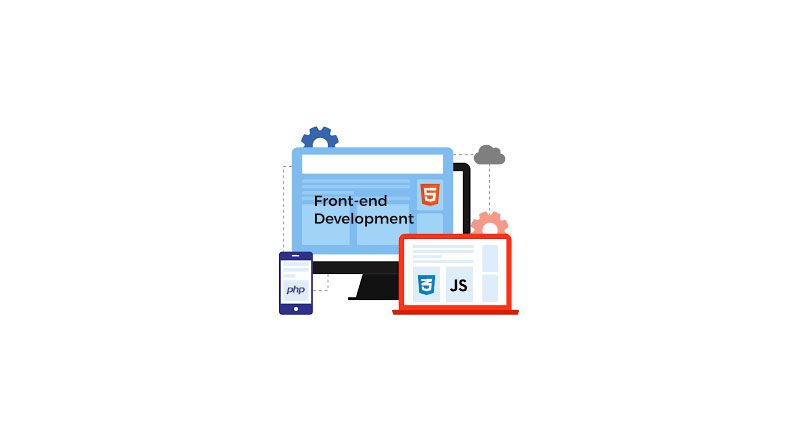What is Front End Development?
Front-end web development, also known as client-side development is the practice of producing HTML, CSS and JavaScript for a website or Web Application so that a user can see and interact with them directly. The challenge associated with front end development is that the tools and techniques used to create the front end of a website change constantly and so the developer needs to constantly be aware of how the field is developing.
Front end web developers use three primary coding languages to code the website and web app designs created by web designers:
- HTML
- CSS
- JavaScript
HTML
The Hypertext Markup Language, or HTML is the standard markup language for documents designed to be displayed in a web browser.
“Hypertext” refers to links that connect web pages to one another, either within a single website or between websites. Links are a fundamental aspect of the Web. By uploading content to the Internet and linking it to pages created by other people, you become an active participant in the World Wide Web.
HTML uses “markup” to annotate text, images, and other content for display in a Web browser. HTML markup includes special “elements” such as <head>, <title>, <body>, <header>, <footer>, <article>, <section>, <p>, <div>, <span>, <img>, <aside>, <audio>, <canvas>, <datalist>, <details>, <embed>, <nav>, <output>, <progress>, <video>, <ul>, <ol>, <li> and many others.
An HTML element is set off from other text in a document by “tags”, which consist of the element name surrounded by “<” and “>”. The name of an element inside a tag is case insensitive. That is, it can be written in uppercase, lowercase, or a mixture. For example, the <title> tag can be written as <Title>, <TITLE>, or in any other way.
CSS: Cascading Style Sheets
Cascading Style Sheets (CSS) is a stylesheet language used to describe the presentation of a document written in HTML or XML (including XML dialects such as SVG, MathML or XHTML). CSS describes how elements should be rendered on screen, on paper, in speech, or on other media.
CSS is among the core languages of the open web and is standardized across Web browsers. Previously, development of various parts of CSS specification was done synchronously, which allowed versioning of the latest recommendations. You might have heard about CSS1, CSS2.1, CSS3.
JavaScript
JavaScript is a lightweight, interpreted programming language. It is designed for creating network-centric applications. It is complimentary to and integrated with Java. JavaScript is very easy to implement because it is integrated with HTML. It is open and cross-platform.
JavaScript lets you add a ton more functionality to your websites, and you can create a lot of basic web applications using nothing more than HTML, CSS, and JavaScript (JS for short). On the most basic level, JS is used to create and control things like maps that update in real time, interactive films
and online games. Sites like Pinterest use JavaScript heavily to make their user interface easy to use (the fact that the page doesn’t reload whenever you pin something is thanks to JavaScript!).
Roles & responsibilities of Front-End Developers are listed below:
- Implementation of web design and structure
- Come with different ideas to enhance the user experience
- Ensures that the web design is responsive, secure & scalable
- Stay updated with the latest web design trends, etc.
- Optimizing the user experience.
- Using HTML, JavaScript and CSS to bring concepts to life.
- Developing and maintaining the user interface.
- Implementing design on mobile websites.
- Creating tools that improve site interaction regardless of the browser.
- Managing software workflow.
- Following SEO best practices.
- Fixing bugs and testing for usability.
Conclusion:
The frontend development is one of the growing and never-ending programming languages.
As a frontend developer accessibility, performance and speedy development.
To learn frontend development basics you can visit here.

Namaste UI collaborates closely with clients to develop tailored guest posting strategies that align with their unique goals and target audiences. Their commitment to delivering high-quality, niche-specific content ensures that each guest post not only meets but exceeds the expectations of both clients and the hosting platforms. Connect with us on social media for the latest updates on guest posting trends, outreach strategies, and digital marketing tips. For any types of guest posting services, contact us on info[at]namasteui.com.

